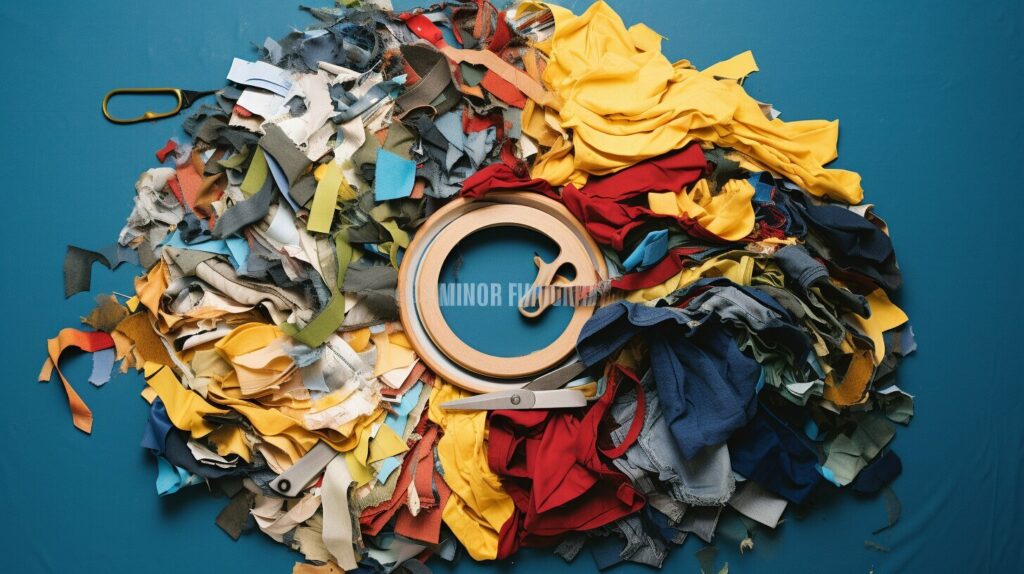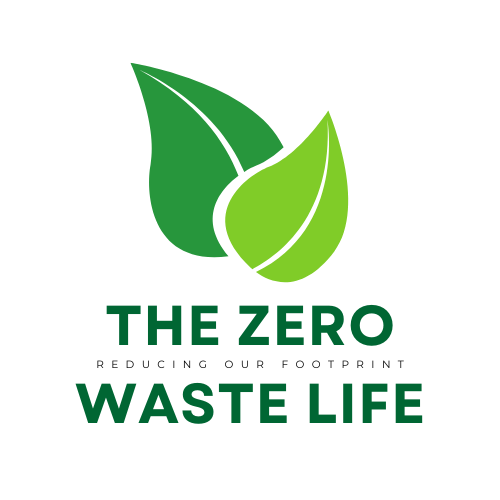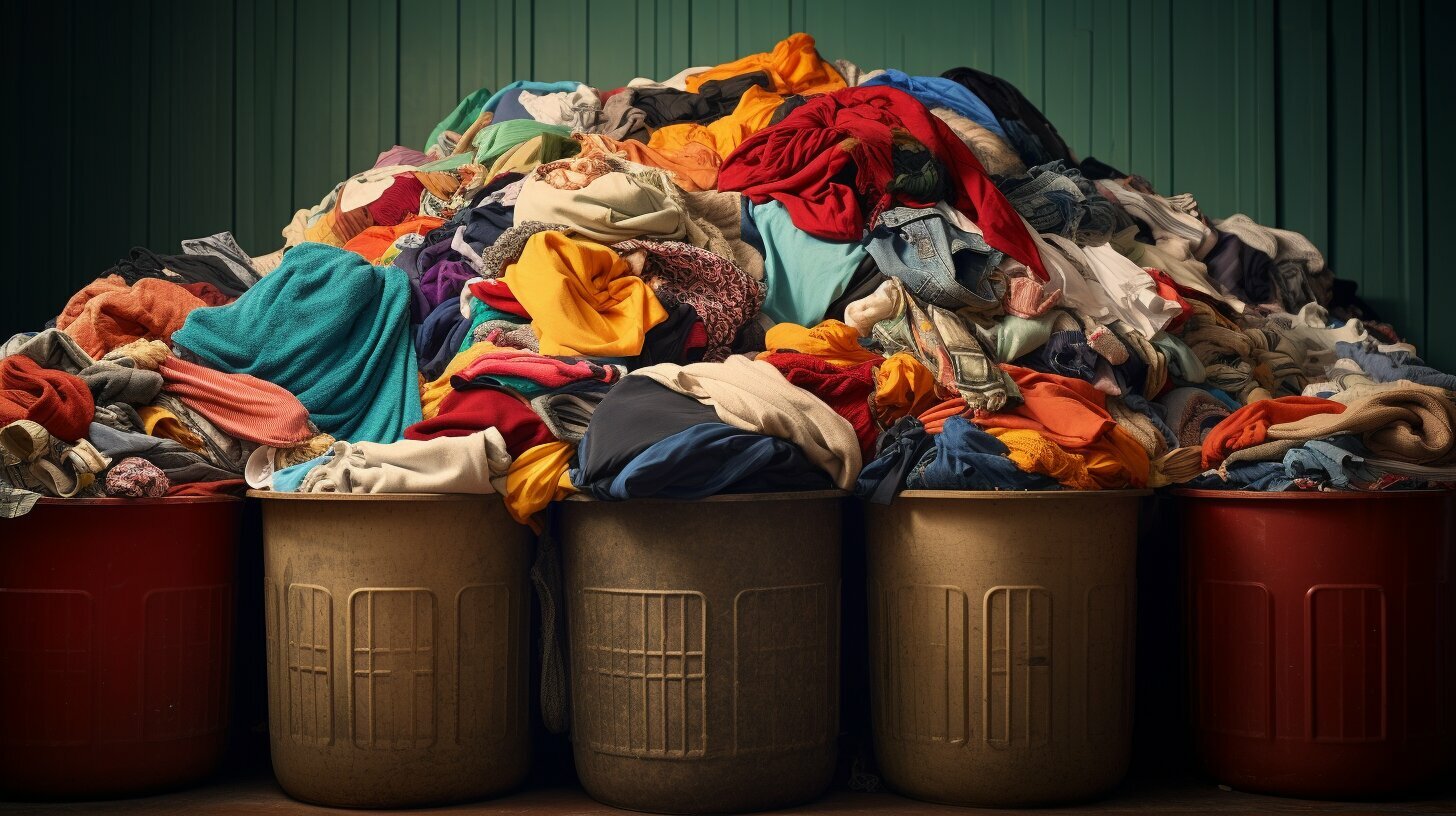The fashion industry is one of the largest contributors to pollution and environmental waste. This is where clothing recycling comes in – a simple yet effective way to reduce our carbon footprint and make sustainable fashion choices.
Recycling clothes not only helps to reduce waste but also contributes to a circular economy where materials are reused and repurposed. By recycling at least one item of clothing, you help to make a difference in the fashion industry and the environment.
Key Takeaways:
- Clothing recycling is an effective way to reduce environmental waste and carbon footprint in the fashion industry
- Recycling contributes to a circular economy, where materials are reused and repurposed
- By recycling at least one item of clothing, you can make a difference in reducing textile waste
Understanding Clothing Recycling and Its Impact
As I mentioned earlier, clothing recycling is a crucial component of the circular economy. But what exactly does that mean? In simple terms, the circular economy is an economic system that focuses on minimizing waste and maximizing the use of resources. In the context of fashion, this means reducing the amount of textile waste generated by the industry and finding ways to repurpose or recycle existing materials.
Why is this important? The fashion industry is one of the largest polluters in the world, with textile waste being a significant contributor to environmental degradation. In the US alone, over 11 million tons of textile waste is generated every year, most of which ends up in landfills. This waste not only takes up valuable space but also emits harmful greenhouse gases, contributing to climate change.
Clothing recycling offers a solution to this problem by diverting textiles from landfills and giving them a new life. There are different methods of clothing recycling, including mechanical recycling, where fabrics are broken down and turned into new fibers, and chemical recycling, which involves breaking down fabrics into their chemical components and reusing them as raw materials. Both methods have their advantages and limitations, but they share the common goal of reducing waste and conserving resources.
The Need for Textile Waste Management
Proper textile waste management is essential for a sustainable fashion industry. Recycling is just one part of the solution; reducing the amount of textile waste generated in the first place is equally important. This can be done by promoting sustainable fashion choices and supporting brands that prioritize ethical and eco-friendly production practices.
Another aspect of textile waste management is ensuring that the recycling process itself is done in an environmentally responsible way. This includes minimizing the use of water, energy, and chemicals during the recycling process and ensuring that any waste generated is properly disposed of.
Overall, understanding the impact of clothing recycling and textile waste management is crucial for building a more sustainable fashion industry. By reducing waste and conserving resources, we can create a world where fashion is both stylish and eco-friendly.

Where Can You Recycle Clothing?
If you’re looking to recycle your old clothes, there are many options available to you. One popular option is to donate your gently-used clothing to a second-hand store or a donation center. Not only does this help reduce waste and promote sustainability, but it also helps those in need.
Another option is to recycle your textiles through textile recycling centers. These centers collect old fabrics, clothing, and other textiles and repurpose them into new materials. This helps reduce the amount of textile waste that ends up in landfills and promotes a circular economy.
It’s important to note that not all clothing can be recycled. Clothing that is heavily stained or damaged may need to be disposed of in a landfill. However, before tossing these items, consider upcycling them into something new. For example, old t-shirts can be turned into rags for cleaning or transformed into a DIY tote bag.
If you’re not sure where to start, a quick Google search for textile recycling centers or second-hand stores in your area can lead you in the right direction.

Remember, recycling your old clothes is just one part of making sustainable fashion choices. By choosing to recycle, you’re promoting a circular economy and reducing the amount of textile waste that ends up in landfills, but also consider donating or selling your gently-used clothing as an alternative to throwing it away.
How to Prepare Clothing for Recycling
Preparing clothing for recycling is an important step in ensuring that it can be repurposed and reused in the most effective way possible. Here are some easy tips to follow:
Sort by Material Type
When preparing clothing for recycling, it is important to sort the items by material type. This makes it easier for recycling centers to process the materials and ensure that they are used in the most effective way possible.
Example: Separate your cotton T-shirts from your polyester ones, and your woolen items from your silk pieces. This will help recycling facilities to identify each material and determine how best to process it for future use.
Wash and Dry Clothing Properly
Before donating or recycling clothing, it is important to wash and dry it properly to ensure that it is clean and ready for reuse. Make sure to follow the care instructions on the label to avoid damaging the fabric.
Example: Wash your clothes in cold water and avoid using harsh detergents or bleaches, which can damage the fibers. Dry them on low heat or hang them to air dry.
Check for Upcycling Opportunities
Before donating or recycling clothing, it is a good idea to check if there are any upcycling opportunities. Upcycling involves taking old or unused items and turning them into something new and useful.
Example: If you have a T-shirt with a stain that won’t come out, consider turning it into a rag for cleaning instead of throwing it away. Or, if you have a pair of jeans that no longer fit, try turning them into shorts or a denim skirt.
Donate or Recycle Clothing in Good Condition
When donating or recycling clothing, make sure that it is still in good condition and can be worn or repurposed. Damaged or heavily worn clothing may not be accepted by recycling centers or may not be suitable for donation.
Example: If you have a shirt with a small hole or missing button, consider fixing it before donating or recycling it. This will increase its chances of being used and reduce waste in the long run.

By following these simple tips, you can ensure that your clothing is prepared for recycling in the most effective and sustainable way possible. Whether you are donating, selling, or repurposing your old clothes, you can play a role in reducing textile waste and promoting a more sustainable fashion industry.
Benefits of Recycling Clothes
Recycling clothes has numerous benefits for both the environment and society. By reducing textile waste and promoting the use of recycled materials, clothing recycling can help mitigate the negative impact of the fashion industry on the planet.
One of the primary benefits of recycling clothes is the reduction of waste. According to the Environmental Protection Agency, the average American throws away around 70 pounds of clothing each year, contributing to the growing problem of textile waste. Recycling clothes can divert textiles from landfills and incinerators, helping to reduce greenhouse gas emissions and conserve resources.
Recycling clothes can also promote the use of recycled materials in the fashion industry. By turning old clothes into new textiles, clothing recycling can help close the loop on the production of clothing, reducing the need for virgin materials and the water and energy required to produce them. This can also help create a more circular economy, where resources are kept in use for as long as possible and waste is minimized.
Furthermore, promoting sustainable fashion practices through clothing recycling can have a positive social impact. By donating or selling clothes in good condition, individuals can contribute to local communities and support second-hand stores or charitable organizations. This can also help make fashion more accessible and affordable for individuals who may not have the means to buy new clothes regularly.

In addition to the environmental and social benefits, recycling clothes can also encourage sustainable fashion choices and promote a more conscious approach to consumption. By choosing to recycle clothes instead of buying new ones, individuals can significantly reduce their fashion waste and contribute to a more sustainable fashion industry.
Overall, recycling clothes is a simple and effective way to make a positive impact on the environment and society. By choosing to recycle clothes and supporting sustainable fashion practices, we can help create a more sustainable and equitable future.
Tips for Sustainable Clothing Choices
As I mentioned earlier, making sustainable clothing choices is an essential part of reducing our environmental impact. Here are some practical tips on how to do it:
- Opt for quality over quantity: Investing in high-quality clothing made to last can save you money in the long run and reduce the amount of textile waste.
- Avoid fast fashion trends: Instead of following the latest trends, try to develop a personal style that can withstand the test of time.
- Support ethical and eco-friendly brands: Look for brands that prioritize sustainable materials, ethical production practices, and fair labor standards.
- Shop second-hand: Buying pre-loved clothing is a great way to reduce waste and support a circular economy. Check out thrift stores, consignment shops, and online resale platforms.
- Host a clothing swap: Get together with friends and exchange clothes you no longer wear. This is a fun and sustainable way to refresh your wardrobe without buying new clothes.
Remember, every little sustainable choice you make can have a big impact on the world we live in. So let’s make a conscious effort to choose eco-friendly fashion options.

Upcycling and DIY Fashion Projects
If you’re feeling creative and want to try your hand at some sustainable fashion DIYs, upcycling old clothing items can be a fun and rewarding project. Not only does it give new life to clothes that might otherwise have ended up in a landfill, but it also allows you to customize your wardrobe with unique and personalized pieces.
There are endless possibilities for upcycling clothes, from turning old t-shirts into tote bags to revamping jeans with patches and embroidery. Pinterest and YouTube are great resources for finding inspiration and tutorials for upcycling projects.

One of my favorite upcycling projects is turning old scarves into kimono-style jackets. Not only is it super easy (no sewing required!), but it can completely transform an outfit with a statement piece that is both sustainable and fashionable.
“The best part about upcycling is that the possibilities are endless, and it allows you to express your creativity while also making a positive impact on the environment.”
If you’re not the DIY type, there are also many ethical fashion brands that specialize in upcycling and repurposing old clothing items into new and trendy pieces. These brands often use materials that would otherwise go to waste, such as discarded denim or surplus fabrics.
Upcycling is a great way to promote a more sustainable and personalized approach to fashion, and it’s a fun and rewarding way to get creative with your wardrobe.
Supporting Sustainable Fashion Brands
When it comes to making sustainable fashion choices, supporting brands that prioritize ethical production practices and use recycled or sustainable materials is crucial. By choosing to purchase from these brands, we can show our support for a more environmentally friendly and socially responsible fashion industry.
One way to find sustainable fashion brands is to do some research online. Look for brands that prominently feature their sustainability efforts on their websites and social media. You can also look for certifications such as the Global Organic Textile Standard or the Fair Trade certification to ensure that the brand is committed to sustainability and ethical practices.
Another option is to shop at online marketplaces that specialize in sustainable fashion. These platforms curate a selection of brands that meet strict sustainability criteria, making it easier for consumers to make eco-friendly purchasing decisions. Some popular sustainable fashion marketplaces include The Good Trade, Eco-Stylist, and DoneGood.
Lastly, don’t forget about second-hand shopping as a sustainable alternative. Thrift stores and online marketplaces such as ThredUp and Vinted offer a wide variety of gently-used clothing at a fraction of the cost of new items. By choosing to buy second-hand, we can reduce waste and give clothing a second life.

Image source: seowriting.ai
Online Clothing Swapping and Rental Platforms
If you want to be eco-conscious with your fashion choices but don’t want to sacrifice new looks, online clothing swapping and rental platforms are the perfect solution for you. These platforms offer a sustainable alternative to traditional clothing consumption, allowing you to reduce waste and save money at the same time.
One of the most popular online clothing swapping platforms is ThredUp, which allows you to exchange gently-used clothing items with other users. This platform also offers a convenient donation option for clothes that don’t meet the swapping criteria.
Rental platforms like Rent the Runway and GlamCorner provide a wide selection of designer clothing for rent. This is a great option for those special occasions when you want to wear something fancy without breaking the bank or contributing to fast fashion waste.

By participating in clothing sharing economies, you not only reduce your carbon footprint but also contribute to a more circular fashion industry. These platforms promote sustainable fashion choices while providing users with a fun and affordable way to refresh their wardrobes.
Promoting Clothing Recycling in Communities
As individuals, we can all play a role in creating a more sustainable fashion industry. One way to do this is by promoting clothing recycling initiatives in our local communities. Here are some ideas:
Organize a Clothing Swap
A clothing swap is a fun and easy way to exchange clothes with friends and neighbors. Simply invite people to bring their gently-used clothing to a designated location and encourage them to trade items with each other. Not only is this a great way to clear out your closet, but it also helps to promote sustainable fashion choices in your community.
Hold a Donation Drive
If you have a lot of clothing that you no longer need, consider organizing a donation drive in your community. Partner with a local charity or second-hand store to collect clothing and ensure that it goes to those in need. This is a great way to give back and promote sustainable practices at the same time.
| Tip: | Be sure to donate clothing in good condition to ensure it can be reused or recycled. |
|---|
Participate in a Recycling Program
Many communities have textile recycling programs that accept clothing for recycling. Check with your local government or search online for textile recycling centers near you. This is an easy way to ensure that your clothing is disposed of properly and can be used to create new materials.

Educate Others
Spread the word about the importance of clothing recycling and sustainable fashion choices. Share your knowledge with friends, family, and neighbors, and encourage them to make a difference by recycling their clothing or supporting eco-friendly fashion brands.
By promoting clothing recycling initiatives in our communities, we can all work towards a more sustainable and responsible fashion industry.
The Future of Clothing Recycling
As the fashion industry continues to grow, it is becoming increasingly important to find new ways to reduce waste and promote sustainability. Clothing recycling is one of the most effective ways to achieve these goals, and recent innovations in textile waste management offer exciting potential for the future.
Textile-to-Textile Recycling
One approach that has gained traction in recent years is textile-to-textile recycling, which involves breaking down old clothes into their component fibers and using those fibers to create new textiles. This closed-loop system has the potential to drastically reduce textile waste and conserve resources, but it requires significant investment and technological development to become a viable option on a large scale.

Circular Systems
Another promising approach is the development of circular systems that prioritize the reuse and recycling of materials throughout the fashion supply chain. This could involve designing clothes with recyclability in mind, implementing closed-loop systems for textile production and waste management, and encouraging consumers to participate in clothing sharing and recycling initiatives.
Greater Awareness
Ultimately, the future of clothing recycling depends on the collective efforts of individuals, businesses, and policymakers to prioritize sustainability and promote greater awareness of the impact of fashion on the environment. By making conscious choices and supporting initiatives that prioritize sustainability, we can work towards a more circular economy and a more sustainable future.
Conclusion
After exploring the world of clothing recycling and sustainable fashion choices, I hope you feel inspired to take action towards a more environmentally friendly and socially responsible wardrobe. By recycling clothes, we can reduce waste, conserve resources, and promote the use of recycled materials in the fashion industry.
Remember, there are many options for clothing recycling, including textile recycling centers, second-hand stores, and donation centers. By donating or selling gently-used clothing, we can extend its lifespan and reduce the impact of fast fashion on the environment.
Additionally, by making conscious purchasing decisions, opting for quality over quantity, and supporting ethical and eco-friendly brands, we can promote sustainable clothing choices that benefit both ourselves and the planet.
Let’s also not forget about the creative potential of upcycling and DIY fashion projects, as well as the benefits of participating in online clothing swapping and rental platforms. By promoting clothing recycling initiatives in local communities, we can make a collective impact towards a more circular economy and a sustainable fashion industry.
The future of clothing recycling looks bright, with emerging technologies and innovations that aim to minimize waste and maximize the use of recycled materials. It’s an exciting time to be a part of the sustainable fashion movement.
So let’s take action, make sustainable fashion choices, and encourage others to join us. By working together, we can create a brighter, more sustainable future for fashion.

